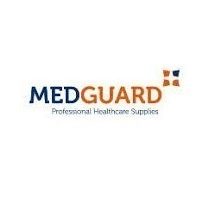Common Medical Equipment Used by Doctors
Whenever you visit a doctor’s clinic, there are certain common equipment you will find on his desk, on his body, or in his coat’s pockets like blood pressure measurer, stethoscope, tongue depressor, gloves, stopwatch, respiratory care devices, etc. This equipment is the one that is necessary for any minor to major medical problems.
These equipment are useful to conduct a quick survey of the patient’s situation. By using that equipment, doctors can get an idea about a patient’s body temperature, blood pressure, heart rates, etc. After knowing all these basics, they can securely move on to the next step, prescribing medicine or doing surgery. In this article, we will know about such standard types of equipment used by every doctor that they are using before moving on to any treatments.
Stethoscope
Let us start with the most obvious and common doctor’s equipment – a stethoscope. French physician R.T.H. Laënnec introduced this tool. He initially made a wooden cylinder that can transmit sounds from a patient’s chest to the doctor’s ears. Now they are available in metal or steel material. The stethoscope is useful for listening to the sounds produced by the body, mainly by the heart or lungs.
Doctors use it to check the heart rates, and other organs’ body sounds to determine the problem. It combines different parts to perform its function. It consists of a chest piece, headset, stem, ear tips, ear tubes, tubing, diaphragm, and/or bell.
Otoscope
This tool is commonly used by ENT (ear, nose, and throat) doctors. It is useful to look at the outer ear canal and, in the eardrum, to find the problem for earache, hearing loss, etc. An otoscope is a tool with a light and a magnifying lens. It has a funnel-shaped viewing piece with a narrow and pointed end called a speculum. It radiates a beam of light to help visualize and examine the condition of the eardrum and ear canal.
Nebulizer
It is a drug delivery device used to give medication in the form of a mist that needs to be inhaled by the patient directly into the lungs. This is one of the respiratory care devices that is useful for treating respiratory diseases like COPD, asthma, etc. They use oxygen or ultrasonic power to break up the medication solutions and suspensions into small pieces that one can inhale easily from the mouthpiece of the device.
Thermometer
This is another common tool that you might have heard of and even used it. This equipment is present in almost all homes, hospitals, workplaces, schools, and public centers. It is useful to measure the temperature of the human body. One just needs to place this tool in the patient’s mouth (under the tongue), which will do its job. It has a display screen where you can see the temperature of the patient’s body. It comes in several types like mercury thermometers, digital thermometers, ear (or tympanic) thermometers, infrared thermometers, and strip-type thermometers.
Sphygmomanometer
This tool is useful for measuring the blood pressure in a patient’s body. Both doctors and nurses use this tool. A sphygmomanometer often referred to as a blood pressure cuff, consists of a cuff wrapped around the upper arm of the patient to measure blood pressure in that specific artery. After that, the pressure is checked, and based on that results, the treatment is provided.
Penlight
Doctors use medical penlight or flashlight to check the small body parts of the patients like eyes, nose, ears, mouth, etc. It is most commonly used to perform pupil’s tests – it is where one needs to check the reaction of pupils to light. I have a good example to explain this to you.
Have you seen doctors in the serials and movies flashing his penlight in the patient’s pupil and then declaring if he is dead or alive? Have you thought about how that light can tell a person’s brain activity? Let me light you up with that information. When a doctor flashes the light in the pupil’s eyes, he checks if the pupil contracts or stays dilated. If they contract, it means that the person is alive; otherwise, they declare the patient dead. Thus, the penlight is useful for a quick survey of a mammal’s small body parts.
Conclusion
The above-mentioned list of equipment is used by medical practitioners and professionals to start their treatment with the conformity of all the basic situations of the body. This equipment needs to be used only by professionals. One should not use the equipment without proper knowledge about the tools.

